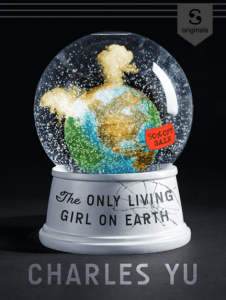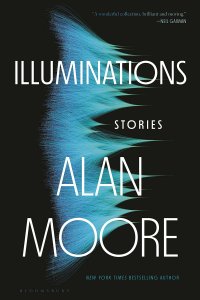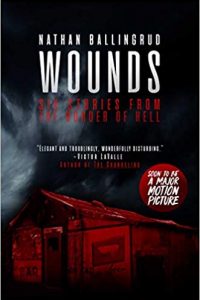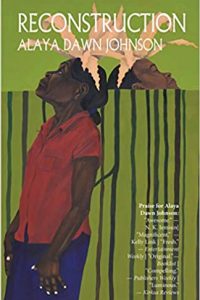Adrienne Martini Reviews The Only Living Girl on Earth by Charles Yu and Project Hail Mary by Andy Weir
 The Only Living Girl on Earth, Charles Yu (Scribd Originals, subscription required, 43pp, eb) January 2021.
The Only Living Girl on Earth, Charles Yu (Scribd Originals, subscription required, 43pp, eb) January 2021.
I’m going to step out on a limb and make a bold pronouncement: the fourth section of Charles Yu’s novelette The Only Living Girl on Earth is the most beautiful and true summation of what it means to be mortal. The fact that it is also surrounded by a poignant and wry story about Jane, the titular girl, and what has become of Earth in 3020 is merely a bonus.
It shouldn’t be a shock that National Book Award Winner Yu, whose How to Live Safely in a Science Fictional Universe remains a title I force into the hands of just about anyone who asks for a book recommendation, is able to distill so much into a short story, but this particular story hasn’t quite broken though the noise of early 2021, and it’s worth loudly calling out.
Without giving much away, Jane is the only living girl on Earth because she works at Earth: The Gift Shop, a tourist attraction for those humans who have scattered far and wide across the galaxy. The Earth itself is no longer inhabitable, for the most part, and some enterprising beings have developed a small part of what remains so that they can separate sightseers from their money. Initially, the gift shop was attached to Earth: The Museum, which didn’t really grab anyone. Then it became Earth: A Theme Park and Gift Shop but no one really liked the (sometimes fatal) rides and most visitors wanted some tchotchke to show they’d been there. Evolution took its course and now only the tchotchkes remain.
That rough set-up merely suggests the tone and setting, mind. But to tell you all that these 10,000 words suggest about family and isolation in our current odd time would spoil the joy to be found in discovering them yourself.
 Project Hail Mary, Andy Weir (Ballantine 978-0-59313529-4, $28.99, 496pp, hc) May 2021.
Project Hail Mary, Andy Weir (Ballantine 978-0-59313529-4, $28.99, 496pp, hc) May 2021.
The breakout first novel is both a blessing and a curse. The blessing part is obvious, right? Cash. Cachet. More cash. The curse hits with the next book, which couldn’t possibly live up to the freak success of the work that proceeded it. Lightning never strikes twice. Plus, all of the rejection that the first novel went through likely caused the writer to hone it into a sleek plot delivery system, which likely helped its success. The next book, however, won’t go through nearly as many revisions, nor will it be subjected to as much editorial scrutiny during its development.
Andy Weir’s The Martian was a blockbuster. Not only did it sell and sell and sell, it spawned a hit movie with a big star. His next book, Artemis, was perfectly serviceable but didn’t do nearly the business his first outing did. With his third book, Project Hail Mary, Weir is leaning hard into all that made The Martian kick.
Science teacher Ryland Grace wakes up with no memory of how he got where he is (or even that he is a science teacher or that his name is Ryland Grace). What he does know is that there are two dead people in the room with him, and that big robotic arms keep trying to do stuff to him.
Grace decides to science the shit out of his problem and figures out that he’s a) on a spaceship and b) expected to save the Earth from an alien menace. His memory comes back to him in fits and starts – and, like in The Martian, opens the story up not a second before it needs to be opened so that we can understand Grace’s conflicts and what their solutions could be.
Project Hail Mary, however, isn’t a simple rehash of The Martian. Instead, it’s a celebration of Weir’s voice. His strength as a writer is explaining science with accuracy and nerdy excitement. Early on in the story, Grace goes off on an aside that starts “the cool thing about pendulums” and the paragraphs that follow show you a lot about the character and, of course, a cool thing about pendulums.
Weir’s jaunty blend of science and fiction in Project Hail Mary is a return to the work that got him where he is, yes, but it’s also the work of a writer who has the confidence (and cash) to write what makes him most happy, even if it won’t break sales records and star Matt Damon this time around. As a bonus, it’s a joy to read.
Adrienne Martini has been reading or writing about science fiction for decades and has had two non-fiction, non-genre books published by Simon and Schuster. She lives in Upstate New York with one husband, two kids, and one corgi. She also runs a lot.
This review and more like it in the April 2021 issue of Locus.
 While you are here, please take a moment to support Locus with a one-time or recurring donation. We rely on reader donations to keep the magazine and site going, and would like to keep the site paywall free, but WE NEED YOUR FINANCIAL SUPPORT to continue quality coverage of the science fiction and fantasy field.
While you are here, please take a moment to support Locus with a one-time or recurring donation. We rely on reader donations to keep the magazine and site going, and would like to keep the site paywall free, but WE NEED YOUR FINANCIAL SUPPORT to continue quality coverage of the science fiction and fantasy field.
©Locus Magazine. Copyrighted material may not be republished without permission of LSFF.








